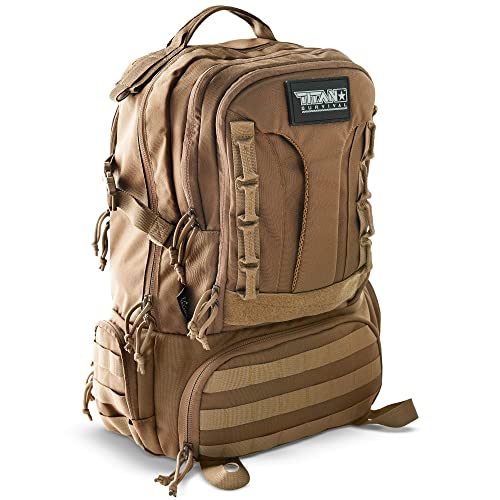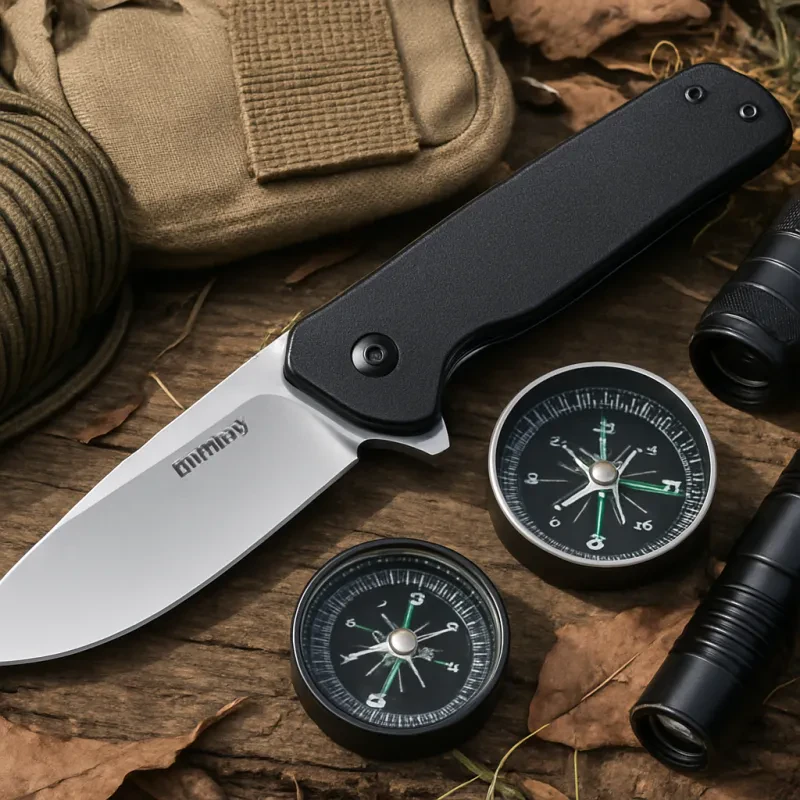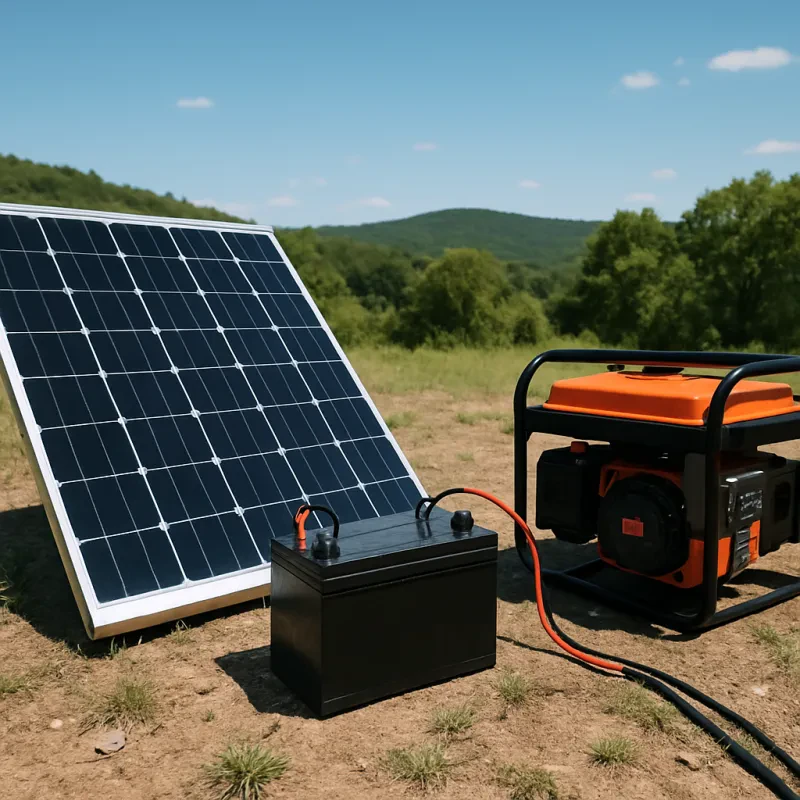 Being prepared for any emergency situation is crucial. One of the best ways to ensure you're ready is by creating a bug-out bag. This comprehensive guide will walk you through the process, highlight the essential items you should include, and provide tips for maintaining your bag.
Being prepared for any emergency situation is crucial. One of the best ways to ensure you're ready is by creating a bug-out bag. This comprehensive guide will walk you through the process, highlight the essential items you should include, and provide tips for maintaining your bag.
Understanding the Concept of a Bug-Out Bag
A bug-out bag, also known as a survival bag or go bag, is a portable kit that contains the items one would require to survive for 72 hours when evacuating from a disaster. The concept is to "bug out" when disaster strikes and there is no other choice but to abandon the home. The aim is to have the bag packed and ready to go at all times, ensuring you can leave quickly if needed.
Choosing the Right Bag
The first step in creating a bug-out bag is choosing the right bag. It should be durable, comfortable to carry, and spacious enough to hold all your essential items. Look for a bag with multiple compartments for easy organization and quick access to your items. Backpacks with padded straps and waist belts can distribute weight evenly, making them a good choice for a bug-out bag.
Identifying Your Needs
Consider your personal needs and the needs of those who might be with you. This includes dietary requirements, medical needs, and other special considerations. For example, if you have a medical condition that requires medication, make sure to include an adequate supply in your bag. If you're packing for a family, consider the needs of each member, including children and pets.
Packing Essential Items
Once you've identified your needs, it's time to pack your bag. While the contents can vary depending on personal needs and circumstances, here are some essential items that should be included:
- Water and Food: Pack at least a three-day supply of water and non-perishable food items. Consider including a portable water filter or purification tablets for purifying water from natural sources.
- First Aid Kit: A comprehensive first aid kit is a must. It should include bandages, antiseptic wipes, tweezers, medical tape, pain relievers, and any necessary prescription medications. You might also want to include an emergency trauma dressing and a tourniquet.
- Clothing: Pack a change of clothes suitable for the weather, along with a rain poncho and thermal blanket. Don't forget sturdy shoes and socks.
- Shelter: A lightweight tent or emergency bivvy can provide shelter. Also consider including a sleeping bag for warmth and a tarp for additional protection from the elements.
- Fire Starting Tools: Waterproof matches, a lighter, or a fire starter can be crucial for warmth and cooking. Consider including a compact stove and fuel if space allows.
- Tools: A multi-tool, knife, duct tape, and a compact shovel can be incredibly useful in a variety of situations. You might also want to include a paracord, which can be used for a multitude of purposes.
- Light: Pack a flashlight and/or headlamp with extra batteries. Glow sticks can also be a good backup light source. A solar-powered lantern can be a good addition too.
- Communication Devices: A hand-crank radio or a solar-powered charger for your cell phone can help you stay informed and reach out for help if necessary. Consider packing a whistle for signaling for help.
- Personal Documents: Keep copies of important documents like your ID, passport, and medical records in a waterproof bag. You might also want to include cash and coins in case electronic payment systems are down.
- Navigation Tools: A compass and map of your local area can be invaluable if you need to find your way without technology. A GPS device can also be useful if you have access to power for charging.
Waterproof 50L Tactical Backpack for Preppers
Securely store your prepping supplies with this waterproof 50L tactical backpack
Product information
$152.98
Product Review Score
4.19 out of 5 stars
432 reviewsProduct links
Maintaining Your Bug-Out Bag
Once your bug-out bag is packed, it's important to maintain it. Check your bag every six months to replace expired items and update your supplies as needed. This is especially important for food, water, and medical supplies. Also, as your needs change over time, make sure to update your bag to reflect those changes.
Managing the Weight of Your Bug-Out Bag
While it's important to pack all the essentials, it's equally important to manage the weight of your bug-out bag. A bag that's too heavy can slow you down and make travel difficult. As a general rule, your bag should not weigh more than 20% of your body weight. Remember, the goal is to be able to move quickly and efficiently during an emergency.
Additional Items to Consider
Depending on your personal needs and the nature of the potential disasters in your area, there are additional items you might want to consider including in your bug-out bag:
- Personal Hygiene Items: Travel-sized toiletries, wet wipes, and hand sanitizer can help maintain personal hygiene during an emergency.
- Entertainment: A book, deck of cards, or other small entertainment items can help pass the time and keep morale up.
- Specialty Gear: Depending on your environment, you might need specialty gear like a mosquito net, bear spray, or snow goggles.
- Extra Glasses/Contact Lenses: If you wear glasses or contact lenses, having an extra pair in your bag can be a lifesaver.
Training and Familiarization
Having a well-packed bug-out bag is only part of the equation. It's also important to know how to use everything in your bag. Take the time to familiarize yourself with all your gear. Practice setting up your shelter, starting a fire, and using your communication devices. The middle of a disaster is not the time to be figuring out how to use your gear.
Packing for Different Seasons
It's important to remember that your needs may change with the seasons. In colder months, you may need additional warmth items like thermal clothing, hand warmers, and a heavier sleeping bag. In warmer months, you may need items like sunscreen, a hat for sun protection, and insect repellent. Consider swapping out items in your bag as the seasons change to ensure you're always prepared.
Having a Plan
A bug-out bag is most effective when used as part of a larger emergency plan. This plan should include where you'll go in an emergency, multiple routes to get there, and a way to communicate or reconnect with loved ones if you get separated. Keep a written copy of your plan in your bug-out bag and make sure everyone in your family knows the plan.
Mental Preparedness
Surviving a disaster requires more than just physical supplies. It also requires mental preparedness. This means being able to stay calm, think clearly, and make decisions under pressure. Consider including stress-relief items in your bag, such as a journal, comforting photos, or calming teas. It's also a good idea to practice mindfulness and stress-management techniques regularly so you can use them in an emergency.
Conclusion
Creating a bug-out bag is a crucial part of emergency preparedness. It's not just about packing the right items, but also about adjusting for different seasons, having a comprehensive emergency plan, and preparing mentally for the challenges of survival. Remember, the goal of a bug-out bag is to help you survive for at least 72 hours. Stay safe and stay prepared.



